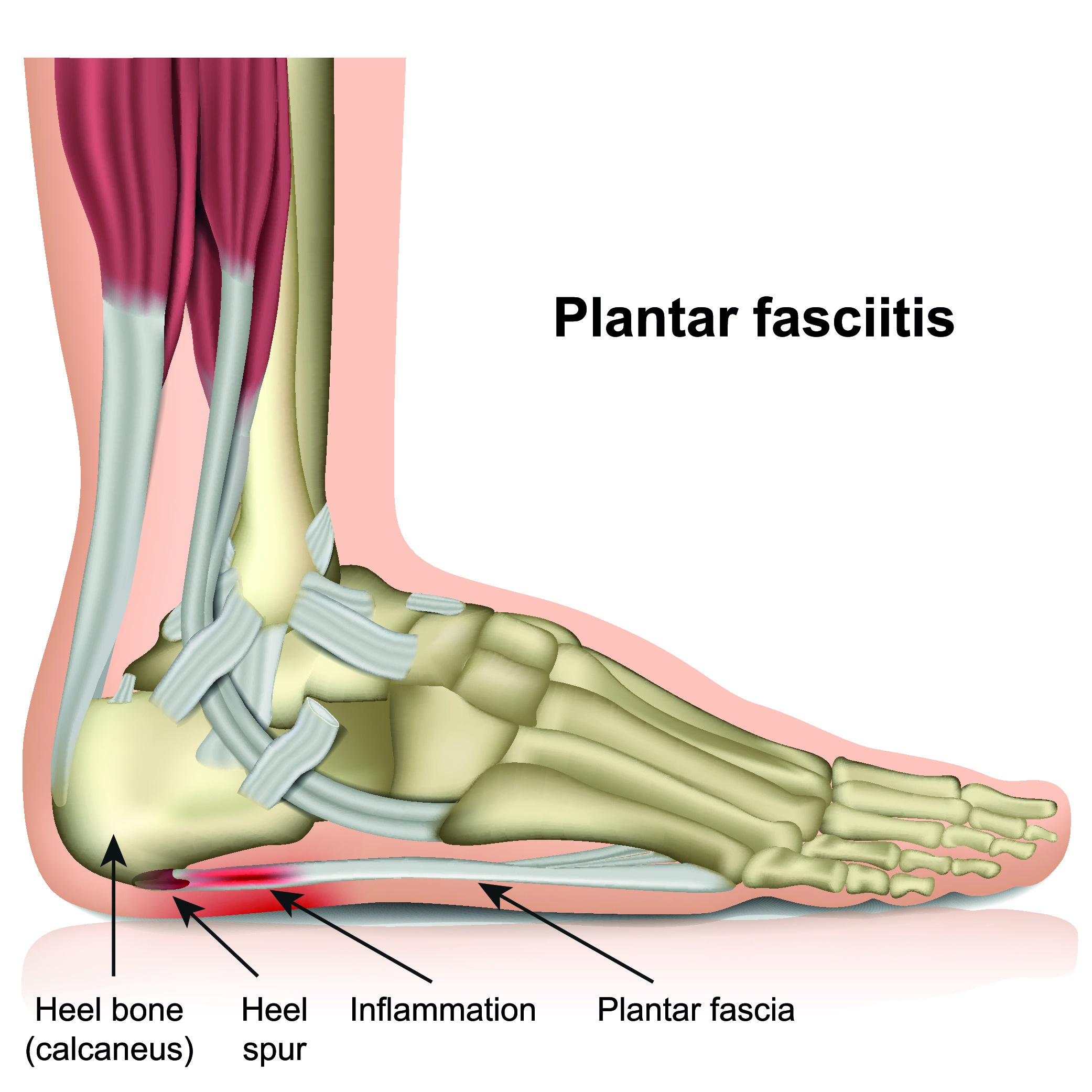What is Plantar Fasciitis?
Plantar Fasciitis is the most common foot complaint we see in our Sandy Bay and Kingston clinics. Plantar fasciitis or ‘heel spur syndrome’ is a condition causing severe pain under the heel bone. Generally, the pain is worse with the first few steps in the morning out of bed, after sitting, and towards the end of the day. The Plantar Fascia is a long tendon-like cord that runs through the arch and attaches to the underside of the heel bone. When the fascia is under prolonged tension such as in people with flexible pronated flat feet, the fibres of the facia become inflamed, thickened, and painful. In some cases the facia can become calcified hence the term ‘heel spurs’. Note though that heel spurs are very common in the absence of pain, so it is thought that the spur itself is not the painful part.
If your heel hurts first step in the morning or after sitting for extended periods, or it feels like you’re walking on stones, it could be Plantar Fasciitis.

Who gets Plantar Fasciitis?
We see Plantar Fasciitis in people of all ages, occupations and demographics but usually from their 40’s onward (younger in athletes). Note, we don’t necessarily only see Plantar Fasciitis in active people or workers spending all day on their feet. It can affect even quite sedentary people and usually with no preceding identifying cause or trigger.
Pain and symptoms
People with Plantar Fasciitis generally describe the pain as a stone bruise, or as if they are walking on a stone. The pain is worse first step out of bed, generally gets better when warmed up, but will get worse toward the end of the day. People with this condition will generally complain of severe pain after breaking for lunch, and after dinner. Most people will try a change of footwear or a cushioned insole which rarely works to alleviate symptoms. If left untreated, the thickening and damage to the fascia can become entrenched and cause long term (12+ months) pain which will affect your ability to work, exercise and play.
How we treat Plantar Fasciitis
Following a detailed history and physical exam, our podiatrists can generally diagnose the condition immediately. There are a few other conditions that can mimic the symptoms of Plantar Fasciitis and if your podiatrist is uncertain they will refer you for further examinations such as x-rays. At your appointment your podiatrist will perform a biomechanical assessment including a gait (walking) assessment. It’s important to identify any functional problems that may predispose you to developing Plantar Fasciitis such as flat flexible ‘pronated’ flat feet. Tight calf muscles and range of motion problems with the big toe joint are also contributors to developing Plantar Fasciitis. We often see the condition in patients with a pronated (rolled in, flat) foot type. The fascia in this foot is under continual tension at its insertion point under the heel with each step you take.
Orthotics are the gold standard treatment for this problem as they work to reduce flattening of the arch and abnormal tension of the fascia on the heel bone. Our custom-made orthotics are designed precisely for your feet by taking a 3D scan and manufactured by 3D printing processes.
If you are experiencing heel pain, book an appointment with the team at Footwell Podiatry today.
